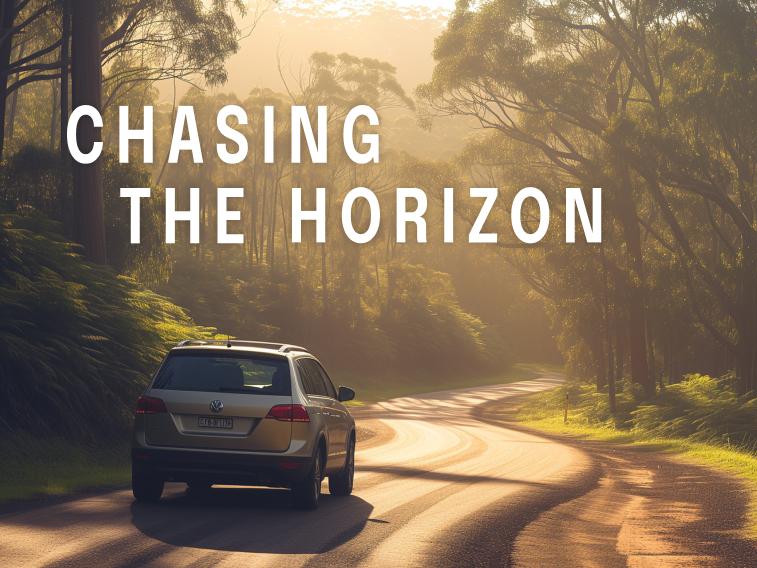Through a bold approach to innovation and a commitment to excellence, Anna Kasman has redefined the sushi dining experience, helping to shape the future of hospitality.


Insight
Where economics and investing meet, the road ahead and how to prepare

Pinpointing where we are in the cycle is nowhere near as straightforward as it was in years gone by. Here, NAB chief economist Alan Oster and JBWere chief investment officer Sally Auld posit some near-term predictions for Australia’s economic health, business prospects and investor priorities.
The ambient uncertainty that has pervaded economic discourse since we emerged from the grip of the pandemic has prompted even the most seasoned forecasters to question their reasoning. JBWere’s Sally Auld says: “Last year was humbling for economists because things turned out better than everyone expected despite the interest rate hikes, and Covid factors are taking longer to play out than predicted.” She says there is consolation for investors who have felt constrained by such ambiguity; “Even though the outlook might be difficult to pin down, the opportunity cost of not being full-steam-ahead on growth assets is actually pretty low at the moment, so you shouldn’t feel like you’re missing out on a whole lot by structuring your portfolio defensively.”
On the other hand, this continued deferral of the “end of the cycle” has NAB’s Alan Oster concerned about how long the average Australian can continue their financial juggling act, with savings having dwindled and concerns about job security mounting according to behavioural surveys. He says: “We have at least another six months of tough conditions, with services inflation proving sticky and a while before the Reserve Bank starts cutting, with that likely to be at a modest rate of 25 points per quarter. The question is when exactly will the people whose mortgage payments grew by $2000 a month last year simply run out of money? That’s not far down the track if we don’t make serious progress on reaching the mid-range inflation target.” As of January, inflation is expected to get down near 2.5 per cent by late 2025.
Rather than turning to history to map the rest of the cycle, we find ourselves in largely uncharted territory. Oster continues: “The difference between now and 1989 is that unemployment remains really low, though it has risen slightly in recent months and is likely to continue creeping up without the job creation to support school-leavers and immigrants.” He suggests Australian employers need to be creating around 40,000 jobs per month to accommodate the increase in migrant arrivals, but sluggish economic growth makes 20,000 more realistic. If the unemployment rate for the population as a whole stays below 5 per cent, he remains optimistic.
Proceed with caution
With job security and post-pandemic revenge spending shoring up consumer activity until now, Australian businesses have been relatively insulated. Weak forward orders for retail goods and consumer services, however, indicate that confidence has taken a dive. “Business confidence, which tends to be a more reliable sign of economic performance than consumer sentiment, has dipped to 2012 levels according to our SME surveys,” explains Oster, while adding that below-average GDP growth of 1.7 per cent is expected through 2024.
Taking a step back to consider Australia’s position relative to similar economies, we find more encouragement. Oster agrees with Treasury forecasts that we could be back to 2.25 per cent economic growth by the end of 2025. “If we needed to, we could still fire up fiscal policy because our debt-to-GDP ratio is quite low, and not many countries can say the same,” he adds.
Auld agrees that Australia’s foundations remain strong, even if the halcyon days might be over for some investors. “We have strong population growth and a medium-term fiscal situation nowhere near as dire as countries like the US and the UK. For the past 20 years we have enjoyed mostly one-way traffic in house prices and equity markets, but that’s not the world we’re in anymore.” She continues: “You’re going to have to be a bit more thoughtful in how you structure your portfolio and be more open to changing things up more frequently.”
Fork in the road
Though high private equity valuations are offering limited upside, Auld says attractive options for downside protection should not be overlooked. “The silver lining is there are opportunities for investors to earn attractive running yields in fixed income, which is just a nice asset class for parking some funds,” she explains.
In terms of industry momentum, the decline in discretionary retail, CBD office and transport is contrasted by the strength of sectors such as value-added manufacturing and healthcare. The outperformance of the S&P 500’s big technology stocks last year is also expected to have significant flow-on effects in 2024. Auld explains: “Artificial intelligence is a structural thematic, in that NVIDIA has been the darling stock and now people are thinking more broadly about parts of the economy that are likely to benefit from this technology, such as healthcare or financial services, and looking at the companies that are building the data centres, for example.”
Another key talking point in 2024 is the importance of diversification as a strategy for mitigating risk in an investment portfolio, with close to half the global population heading to the polls. “The noise around this year’s major elections everywhere from the US to India to Taiwan, and the European Union, is adding to the sense that this world is not quite as nice as the one that we’ve lived in for the past couple of decades,” Auld says. “You’re going to have to be a bit more thoughtful in how you structure your portfolio with a keen focus on both asset allocation and diversification.
Though geopolitical risk is not going away anytime soon and Australia seems to have diverged from the road taken by similar nations, its reputation as a robust and innovative economy is holding firm.
Originally published in The Luxury Report, February 2024
© National Australia Bank Limited. ABN 12 004 044 937 AFSL and Australian Credit Licence 230686.